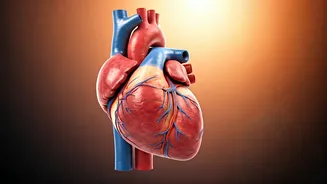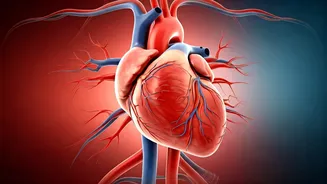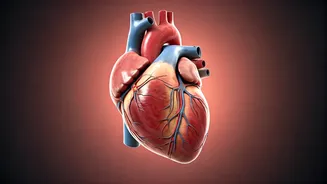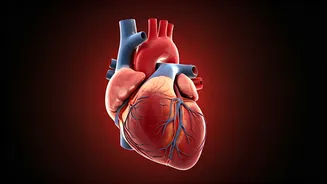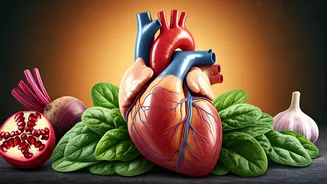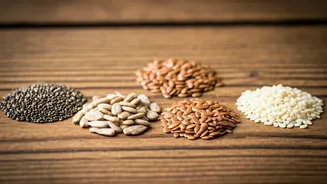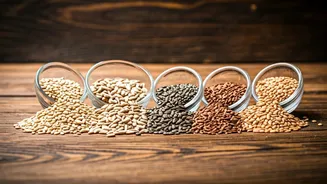Understanding Circulation Issues
Poor circulation often manifests in the lower limbs, causing problems like swelling (edema), cold feet, and slow-healing sores. These issues arise when
blood vessels, such as veins and arteries, don't function optimally, hindering the efficient flow of blood. This can lead to fluid buildup in the legs and feet. This section examines the importance of healthy circulation and the initial warning signs of potential issues. It is essential to recognize the early indicators of poor circulation to take proactive measures. By understanding the underlying causes and symptoms, individuals can make informed decisions about their health and seek appropriate care if needed.
Embrace Circulation-Boosting Foods
Certain foods have properties that enhance circulation and support vascular health. Consuming foods rich in antioxidants, like berries and leafy greens, can protect blood vessels from damage and promote their elasticity. Garlic is another potent food known to improve blood flow. Other beneficial food groups include those containing omega-3 fatty acids, such as fatty fish like salmon, known for their anti-inflammatory properties, which can help support healthy blood vessels. Incorporating these foods into your diet is a delicious and effective way to nurture your cardiovascular system. Make mindful choices by selecting vibrant, nutrient-dense options to achieve better circulation.
Hydration and Circulation
Proper hydration is crucial for good circulation. Dehydration can cause the blood to thicken, making it harder to flow through the vessels. Drinking adequate water helps maintain blood volume and supports optimal blood viscosity. Aim for the recommended daily intake of water, which varies based on individual factors such as activity level and climate. Staying well-hydrated ensures your blood flows smoothly. Making a conscious effort to drink water throughout the day can significantly improve your overall cardiovascular health. It can be easy to incorporate hydration into your daily routine by carrying a water bottle and sipping from it regularly.
Exercise for Healthy Legs
Regular physical activity is vital for improving circulation, particularly in the lower limbs. Exercise helps pump blood throughout the body, strengthening blood vessels and encouraging efficient blood flow. Engaging in activities like walking, jogging, or cycling improves circulation in your legs and feet. For those who sit for extended periods, incorporating regular breaks to stretch and move around is essential to improve circulation. Even brief periods of movement can prevent blood from pooling and reduce the risk of swelling or discomfort. Exercise promotes overall cardiovascular health and helps maintain good leg circulation by boosting blood flow. Making exercise a part of your daily routine will benefit your circulatory health.
Lifestyle Changes for Health
Adopting certain lifestyle changes can significantly improve circulation and prevent lower limb issues. Limiting the intake of sodium can help reduce fluid retention and edema, decreasing swelling. Elevating your legs when resting, especially if you have a sedentary job, can help drain excess fluid. Avoiding prolonged periods of sitting or standing without movement promotes healthy blood flow. Consider wearing compression socks, which apply gentle pressure to the legs, assisting blood flow back to the heart. Making these changes will provide valuable support for your overall vascular health. These simple adjustments can make a significant difference in your well-being. Prioritizing these habits helps improve circulation.
Herbal Remedies and Supplements
Certain herbal remedies and supplements may also support healthy circulation. Ginkgo biloba is often cited for its potential to improve blood flow and reduce swelling. However, it's essential to consult a healthcare provider before starting any new supplements. They can provide advice based on your individual health needs. Other supplements, such as horse chestnut, may support blood vessel health. Be sure to seek professional medical advice before incorporating these into your routine. This will help you manage your health and make informed decisions. It's important to consult with a medical professional to make sure the supplements align with your health goals.
When to Seek Advice
While diet and lifestyle changes are essential, it's important to know when to seek medical attention. If you experience persistent swelling, pain, or sores on your legs, see a doctor. These symptoms could indicate an underlying condition requiring medical evaluation. It is also important to seek professional help if you experience a sudden onset of symptoms or if your symptoms worsen. A healthcare provider can provide an accurate diagnosis and appropriate treatment. Early diagnosis and intervention are vital for optimal outcomes. Do not delay seeing a doctor when you have concerns about your health.
